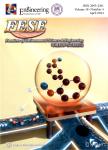The variation of microbiological characteristics in surface waters during persistent precipitation
作者机构:Xiamen Univ Coll Environm & Ecol Xiamen 361102 Peoples R China Xiamen Univ Fujian Key Lab Coastal Pollut Prevent & Control Xiamen 361102 Peoples R China
出 版 物:《FRONTIERS OF ENVIRONMENTAL SCIENCE & ENGINEERING》 (环境科学与工程前沿(英文))
年 卷 期:2024年第18卷第9期
页 面:111-0页
核心收录:
学科分类:0830[工学-环境科学与工程(可授工学、理学、农学学位)] 0401[教育学-教育学] 04[教育学]
基 金:National Key R&D Program of China [2023YFE0112100] Natural Science Foundation of China-Joint Fund Project [U2005206]
主 题:Rainfall Dissolved organic carbon Culturable bacteria Water quality Microbial community structure Climate change ESCHERICHIA-COLI EXTREME PRECIPITATION AEROMONAS-HYDROPHILA URBAN QUALITY RIVER STORMWATER EXPOSURE RAINFALL EVENTS
摘 要:Climate change leads to an increase in both the frequency and intensity of extreme precipitation. Surface runoff generated by extreme precipitation has a significant impact on water. However, the impact of persistent precipitation on surface water quality is easy to neglect, due to its prolonged duration and lower-intensity rainfall. This study established eight sampling points within selected surface waters to observe the variation of microbial characteristics in a typical persistence precipitation event. The primary difference between Furong Lake (FL) and Chengqian Reservoir (CR) was: the concentrations of dissolved organic carbon (DOC) were 21.3 +/- 0.7 and 8.3 +/- 1.5 mg/L in FL and CR, respectively. The concentrations of R2A culturable bacteria and coliforms were 10(4.57) and 10(1.58) colony-forming units (CFU)/mL in FL, and were 10(5.46) and 10(2.64) CFU/mL in CR, respectively. During precipitation, the maximum increase concentrations of R2A, NA culturable bacteria, and coliforms were 10(0.75), 10(1.30), and 10(2.27) CFU/mL in FL, respectively. Furthermore, microbial concentration and rainfall did not increase simultaneously, and a delay phenomenon was observed in the increasing microbial concentrations. Through analyzing the concentration change trends and correlation of various water quality indicators during persistent precipitation, the significant correlation between the DOC concentration and the changes in the dominant species of microbial community structure was found in this study (p 0.05). For example, as the DOC concentration declined, the abundance of hgcl_clade and CL500-29_marine_group increased. Consequently, although persistent precipitation might not obviously alter the water quality visibly, it could still pose potential microbial risks.



